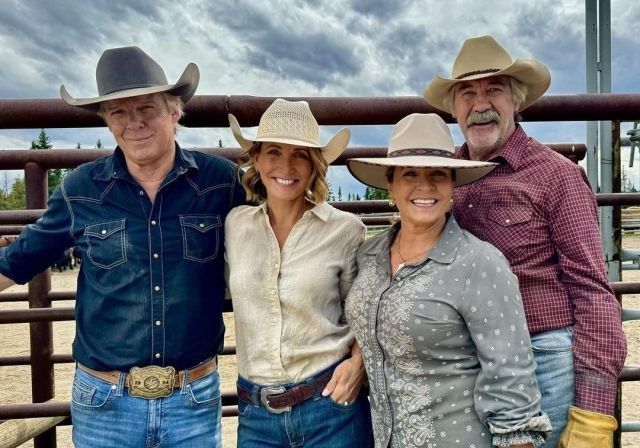Before “multigenerational living” started appearing in headlines and housing surveys, Heartland was already showing how families actually live: multiple generations under one roof, navigating meals, chores, disagreements, and genuine affection.
Heartland didn’t just tell stories about a ranch—it built a family home that many viewers recognized as their own.
Families Like Heartland’s Are Becoming the New Normal
According to Stats Canada, more Canadians than ever—2.2 million—are living in households spanning at least three generations. This arrangement isn’t new everywhere; many cultures never stopped living this way. But in the West, families often drifted apart as work and housing changed. Now, with rising costs and shifting values, parents, grandparents, kids, and even great-grandkids are rediscovering the benefits of staying close.
Heartland had this figured out years ago, and fans resonated because it felt true, even before it became a trend.
How Heartland Writers Made It Feel Real
We spoke with the show’s writers—Heather Conkie, Mark Haroun, and Ken Craw—about creating believable, multigenerational stories:
Heather Conkie: “Our inspiration mostly comes straight from the characters. Amy was only 15 when we started, and we’ve watched her grow up. The audience has grown with her, which makes it all feel real.”
Mark Haroun: “We start with the question, ‘What if?’ What if Amy’s dad suddenly moves back into a home with his ex-father-in-law? Those tensions and funny moments come straight from everyday life.”
Ken Craw: “Honestly, we just borrow from our own families. Those awkward dinners, quiet tensions, silly arguments—writing Heartland is like mining our own family memories.”“We steal from real life. Family drama is everywhere—you just have to pay attention.”
Balancing Four Generations on One Screen
Writing believable interactions between grandparents, parents, and kids isn’t simple—but it’s worth the effort.
Conkie: “Everyone sees things differently. The drama comes from having multiple viewpoints on the same issue. Families don’t always agree, and that’s okay—that’s where stories become relatable.”
Haroun: “After 13 seasons, we have to dig deeper. Our characters keep evolving because we never settle for easy solutions.”
Craw: “Curiosity about human nature helps. Why do some values stick, and why do others change from one generation to the next? These are questions families ask themselves all the time.”“If everyone agrees all the time, it’s boring. Different perspectives—that’s the good stuff.”
When Home Gets a Little Too Cozy
In Season 13, Heartland tackled exactly what happens when living spaces get tight:
Amy and Ty are fostering Luke, Tim wants their loft, and Georgie returns home expecting her independence. Everyone wants their own space, and no one is willing to budge.
Conkie: “We leaned into the chaos that families experience. We didn’t need research—we knew exactly how each character would feel.”
Haroun: “The history we’ve built with these characters guides their reactions. It’s all there.”
Craw: “Even though I’ve never lived with my extended family all at once, I imagine the drama of it all the time. That tension—and humor—is universal.”m TikTok, multigenerational living gives families a fighting chance to pass down what actually matters.”
How Heartland Influenced Real Families
Fans frequently say Heartland brings their own families closer.
Conkie: “Viewers have told us they recreate Heartland’s Sunday dinners. Hearing that is special—it means we’ve captured something genuine.”
Haroun: “Older and younger generations living together helps them understand each other better. We see this every time Jack gives advice or connects with younger family members.”
Craw: “Multigenerational living offers something important for everyone—guidance, purpose, and belonging. Kids learn from grandparents; elders feel valued. It’s simple, yet powerful.”
Heartland reminds viewers of something simple but powerful: sharing a home—and even just dinner—with family can make life richer. In a busy, disconnected world, maybe that’s the best kind of radical act there is.
So why not take some inspiration from Heartland? Gather around the table, share a meal, and reconnect with what matters.


